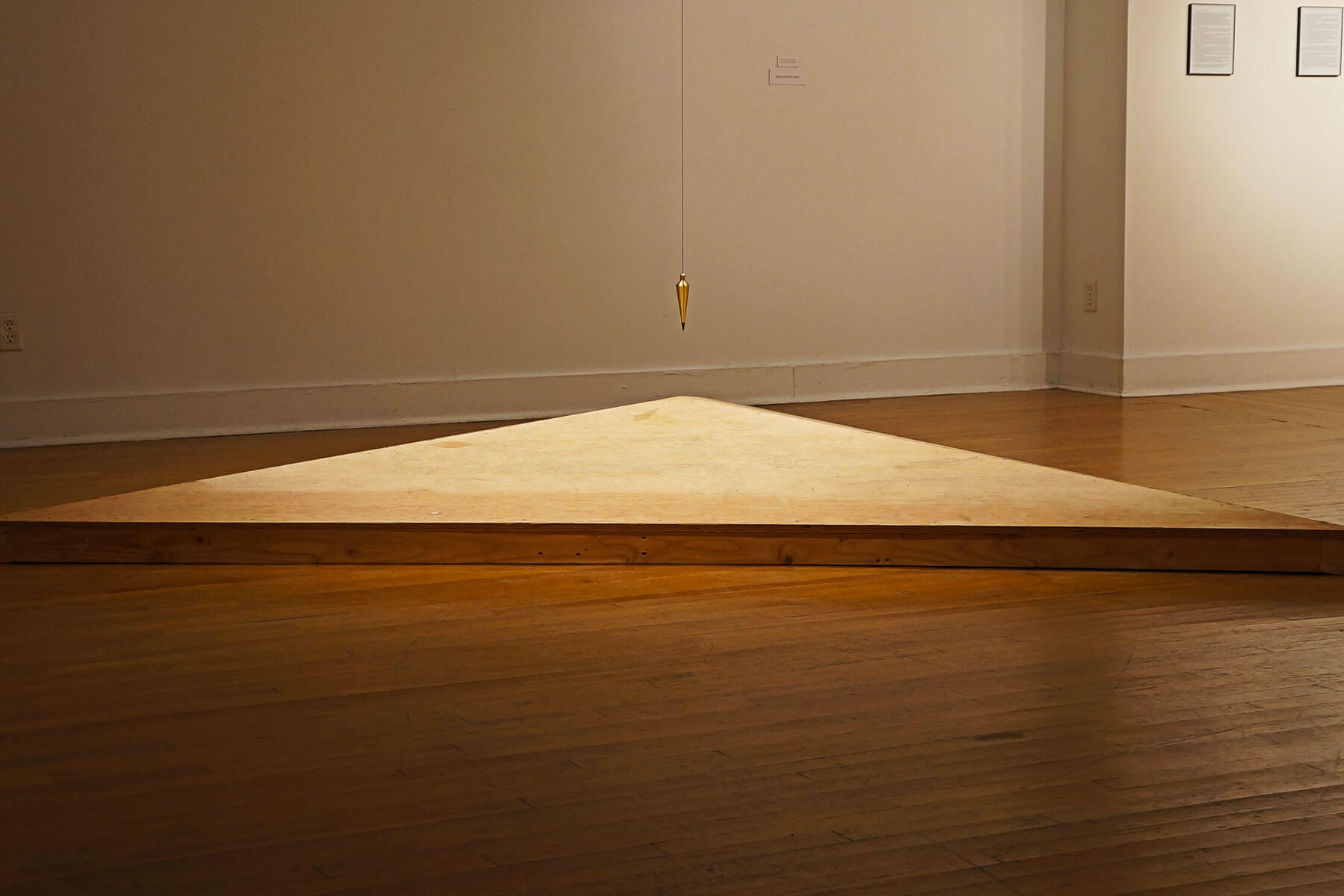
The Book of Amos
An Intervention...
In the Winter of 2015, the Queens Museum featured a show of work from their resident artists, the 2013-2015 Studio Program Exhibition.
Seth Aylmer, a recent MFA from Queens College’s Social Practice Art program, had proposed a work. Aylmer works with a team of builders in a practice based around the forms historically used in religious architecture, often referred to as “sacred geometry.” He and his team planned to build a three-sided pyramid, twenty feet per side and twenty feet tall – an open structure that would feel like a “spiritual space” to those walking through.
Curator Larissa Harris suggested a collaboration with others whose work dealt with religion. Photographer Gina Minielli was exploring the extensive religious diversity in Flushing, NY, the site of the first American legal battle for religious liberty. My own history with the subject was in challenging the sanctity of the texts, particularly as they relate to practice.
It was clear from the first meeting that my role in this collaboration was as “the spoil.” While both Aylmer and Minielli were creating work that was welcoming and celebratory, mine was confrontational and accusatory. The challenge before me now was to contribute in a way that was true to my own practice without alienating the viewer. We joked that my task was to find a way not to be the little boy who simply stands in the center of the room and pulls his pants down.
There were weeks of suggestions and conversation, proposed ideas shot down for reasons from cost to conflict. The answer came when Aylmer mentioned that one of his team was planning to hang a giant plumb line, proportional to the scale of the pyramid, which with its open walls was now more of a great tripod whose purpose was the support of this plumb line hanging from its peak. The plumb line is among the oldest tools known to exist – a simple weight, generally with a pointed end, is hung from a string, and used to measure ninety degrees to sea level, or, “plumb.”
The plumb line is mentioned several times throughout the Old and New Testaments. In each instance, it is used as God’s measure of the integrity of his people. In Chapter 7 of the Book of Amos, I found what became my basis for collaborative intervention.
In something of a Sodom-and-Gomorrah moment, the people of Israel have become complacent and immoral, and God appears before Amos the prophet with a warning to bring to the people. He declares, “Behold: I will hang a plumb line in the midst of my people Israel, and I will visit them no more.” Shortly thereafter, the people having been measured and found wanting, Israel is destroyed by war.
And so I’d found my gesture: I was going to build a platform upon which the visitor to the installation could stand and be measured, in this spiritual space. The platform would be triangular, in keeping with the geometry of the installation, and turned sixty degrees to create reference to the Star of David. But it couldn’t be a flat platform – what I sought was a way to create discomfort, to force the viewer to interact and engage, to insist upon action.
The resulting platform became a low pyramid – again, three-sided, ten feet per side, each third ramped up towards the center point aimed directly at the point of the plumbline above. The rake of the ramp was subtle, a rise of eight inches over three feet – enough to draw the visitor in with a desire to stand on it, but uncomfortable enough to force them to shift their weight in order to stand up straight. Using a rounded metal tool, I inscribed the passage from the Book of Amos into the faces of the platform such that it was impressed into the surface and almost illegible or even unnoticeable. As the surface became dirty with footprints over the course of the show’s opening night, these recessed letters became more visible, “appearing” over time.
I stood by and observed throughout the show’s opening, talking with visitors about the work, engaged in conversation that included statements like, “so you’re saying that it’s not enough to post my political beliefs on Facebook?” My personal favorite summation was an attendee’s remark that one must make herself uncomfortable in order to be righteous.
Reticent at first to “step on the artwork,” once it was clear that they were meant to, people seemed drawn to it, to stand and balance on the ramp. Children in particular were running and playing on it throughout the show. Visitors even lay down on it, angled and gazing up at the instrument by which they were to be measured.
A version of the piece was later shown in a gallery setting, as part of the solo show "A Vaster Dilemma," in 2016.











